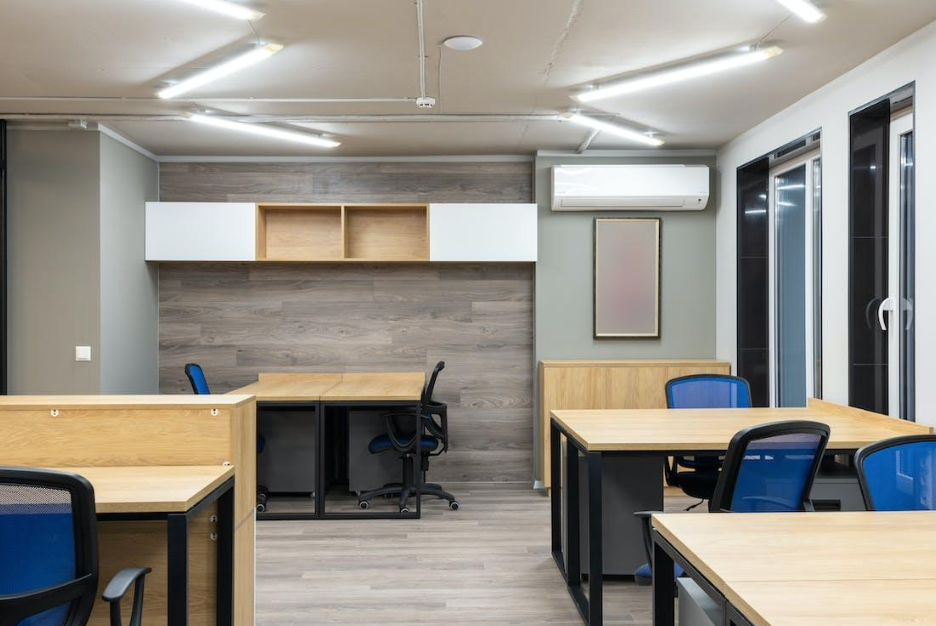
The COVID-19 pandemic led to two main realizations: technology enables us to work from anywhere, and the physical workplace is not as important as it used to be. But will people go back to work? Of course, they will.
Will they go back to the same office? Not at all!
The last few years have drastically transformed people’s expectations of the workplace. True leaders are considering creating excitement at the workplace and making the office a good experience to bring employees to work.
The workplace must be a destination rather than an obligation.
At the same time, how people design, manage, and use offices in today’s day and age has changed.
For company owners, opening a new office or re-launching an existing one requires considerable time, money, and research. It also means a big step in moving your business forward.
Below we have compiled an exhaustive list of tips and suggestions that might be useful when launching your new office space.
1. The right space for the work:
Before committing to office space, it is imperative to determine the business needs of the workplace. This involves various aspects:
- Functionality: What tasks will be performed in the office? Is there a need for open workspaces, meeting rooms, or a combination?
- Team Size: Make sure there is adequate space to accommodate the existing team comfortably and account for future growth.
- In-office food and kitchen services: a mobile food cart will save space and increase overall productivity in the office by reducing queues. With creative and cost-effective solutions available in the market, there is no need to invest in expensive infrastructure.
One such example is a mobile food cart made by Gallery Carts. These carts provide food and beverage services to employees without incurring the significant costs of a standalone canteen.
- Corporate Culture: The design and layout of the office must be in cohesion with the corporate identity and vision. The overall culture also has a trickle-down effect on employee behavior.
- Equipment and Technology: Make sure all furniture, machinery, and internet connectivity requirements are listed well in time to plan efficiently.
- Growth Potential: Keep in mind plans for future expansion and ensure the office space accommodates growth projections for the next few years.
2. Get everyone on board:
Opening up an office space requires a lot of work and planning, and it is essential to take inputs from relevant stakeholders to ensure nothing is missed. It is also a good idea to involve your real estate agent, lawyer, and even employees early on so that they can support you in your decisions.
3. Lease or Buy:
Determine whether you want to lease or buy the space. Each comes with its own set of pros and cons. Your real estate agent and accountant should be able to help you narrow down the choices and determine the best possible option.
4. Location is essential:
It is important to conduct thorough market research, determine your target audience and align the location with the business objectives. Again check with your real estate agent before finalizing any decision.
5. Consider the community:
It is important to thoroughly evaluate the community around a potential workplace location as it impacts overall employee satisfaction and the working environment.
Safety, security, infrastructure, accessibility, and local amenities are some of the important factors to consider. A supportive community can foster positive relationships and collaborations that benefit the company and its employees.
6. Pay special focus to the employees:
Considering the impact of a business move on employees is crucial. It is important to involve employees in decision-making as much as possible. Employees are a company’s most valuable asset, and their well-being, productivity, and job satisfaction are vital to the business’s success.
7. Create team-based neighborhoods:
Workplaces should move away from a one size fits all seating approach. “Neighborhoods” should be created that contain an assortment of work settings. Some areas will be dedicated to individual focus and privacy, while others will be for small-group collaboration and brainstorming.
8. Provide relief from computer screens:
Creating tech-free office spaces is a forward-thinking approach that allows employees to disconnect from digital devices and recharge themselves physically and mentally.
This results in reduced eye strain and fatigue, enhanced productivity, and digital detox.
9. Don’t forget to have fun:
Integrating socializing and recreational activities into the workplace is a strategy many companies have employed to foster creativity and promote team bonding.
10. Prioritize Innovation:
Adaptable spaces must be developed to facilitate experimentation and learning at work. Boardrooms are now replaced by laboratories and workshops where employees plan, think, and innovate.
11. Concentrate on the culture:
The physical workplace should mirror the company’s culture, values, and mission. A tangible representation of what the organization stands for is crucial to help create a sense of belonging amongst employees.
12. Integrate technology with intention:
A truly connected workplace makes work more seamless. This includes video conferencing tools to promote hybrid interactions, safety monitoring systems, and sensor detectors for temperature, volume, and lighting.
13. Focus on sustainability:
Adaptive reuse, water reduction, sustainable materials, and solar panels can help save costs, conserve energy, and positively impact the environment.
14. Purchase essential furniture:
The type of furniture directly affects the overall well-being of the employees. Ergonomic chairs should be added to help improve employees’ posture. Adjustable standing desks allow employees to stand up and move around, promoting good mental health.
15. Remember to announce the move:
Do not forget to update all your contact information on all company materials like business cards, websites, and listings. Moreover, notify all customers of the change for a smooth transition.
Conclusion:
The traditional idea of a static office with rows of cubicles is shifting towards a more dynamic and adaptable environment. The post-pandemic office should be flexible, versatile, and engaging, fostering collaboration, engagement, and a sense of community.
We hope you learned something from this article; if you think we missed something, please tell us in the comments below.






